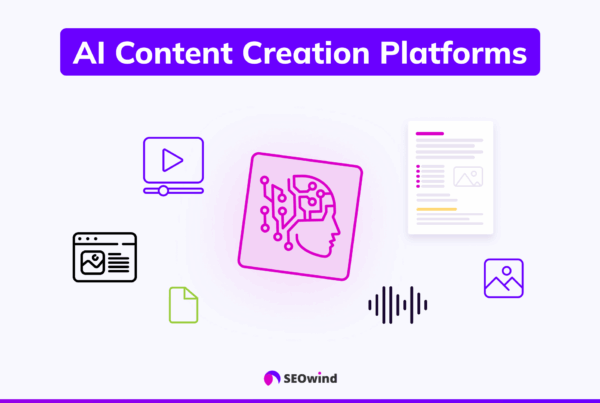Need help to make AI-generated text sound human? You’re not alone. Many find that while AI can produce coherent sentences, it often lacks a human writer’s natural, engaging touch. This can lead to robotic content that fails to connect with readers. The good news? By applying expert tips and techniques, you can transform AI output into text that captivates and resonates with your audience. In this article, we’ll explore proven strategies to help your AI write like a seasoned human author, bridging the gap between machine precision and human creativity.
The Importance of Human-Like AI Content

We can all agree that content is of the utmost importance. But not just any content – it needs to be engaging, relatable, and, most importantly, natural. As AI writing tools become more prevalent, the ability to create content that resonates with readers on a personal level has never been more crucial.
Human-like AI content is essential for several reasons. First and foremost, it builds trust with your audience. Readers who encounter authentic and genuine content are more likely to connect with it emotionally. This connection leads to increased engagement, longer time spent on your website, and higher conversion rates.
Moreover, search engines are becoming increasingly sophisticated in their ability to detect and prioritize high-quality, natural-sounding content. By making AI write more like a human, you’re appealing to your readers and improving your chances of ranking well in search results.
Consider this: the AI writing assistant software market is projected to reach a staggering USD 2.420 billion by 2030, growing at a CAGR of 26.94% from 2024 to 2031 (No link to back this up, and the structure of the dollar amount is strange. Is that 6.454 billion (Source: Verified Market Research).
But it’s not just about quantity – quality matters more than ever. Readers are becoming increasingly discerning, and they can often spot content that lacks the nuance and personal touch of human writing. By mastering the art of making AI write like a human, your content strategy is future-proofed and will continue to resonate with your target audience.
In the following sections, I’ll explore the challenges of mimicking human writing, the key elements that make writing sound human-like, and practical strategies to enhance AI’s ability to create content that genuinely connects with readers. By the end of this article, you’ll be equipped with the knowledge and tools to transform AI-generated text into compelling, human-like articles that engage and inspire your audience.
Can GPT actually help you write like a human?
Well, tools like Humanize AI & Avoid Detection by SEOwind sure seem up to the task. They’re designed to take AI-generated text and transform it until it’s practically indistinguishable from something a human would write. The main idea is to make the content not only clearer and more cohesive but also way more engaging and relatable to actual readers.

With some clever algorithms working behind the scenes, these tools can spot and fix grammar slip-ups, tweak sentence structure, and even add a conversational feel to the text. It’s almost like having a human editor brush up your work! These AI converters strike a balance between the convenience of AI and the authenticity of human writing, making them a great resource for businesses, content creators, and anyone looking to make their written communication stand out.
Understanding the Gap Between AI and Human Writing

As AI writing tools become increasingly sophisticated, it’s crucial to recognize the nuances that still set human writing apart. While AI has made remarkable strides in generating coherent and grammatically correct text, there’s a discernible gap between machine-generated content and human-crafted prose.
Differences in Style and Substance
When it comes to style and substance, human writers often have a distinct edge over their AI counterparts. Here are some key differences:
- Contextual understanding: Humans excel at grasping nuanced contexts and cultural references, allowing for more relevant and relatable content.
- Creativity and originality: Human writers can draw from diverse experiences and imagination to create unique ideas and perspectives.
- Emotional intelligence: People can naturally infuse their writing with genuine emotion and empathy, creating a deeper connection with readers.
- Adaptability: Human writers can easily switch between different tones, styles, and formats to suit various audiences and purposes.
While AI writing assistants can analyze text and provide real-time suggestions using natural language processing (NLP), they often lack the intuitive understanding that humans possess. This can result in AI-generated content that feels somewhat generic or disconnected from the intended audience.
Challenges in Mimicking Human Emotion and Creativity
One of the biggest hurdles in making AI write like a human is replicating the emotional depth and creative spark that characterize human writing. Here are some specific challenges:
- Emotional nuance: AI struggles to convey subtle emotional undertones or complex feelings that humans can effortlessly express through their choice of words and phrasing.
- Originality: While AI can combine existing information in new ways, it often falls short in generating original ideas or innovative solutions to problems.
- Personal experiences: Human writers can draw from their unique life experiences to add authenticity and relatability to their writing, something AI cannot replicate.
- Humor and wit: Crafting clever jokes, puns, or satirical content remains a significant challenge for AI, as it requires a deep understanding of context and cultural nuances.
Despite these challenges, the market for AI writing assistant software continues to grow, driven by factors such as ease of use, time-saving capabilities, and reduced human effort. As AI technology advances, we can expect to see improvements. However, the unique qualities that human writers bring to the table will likely remain valuable for the foreseeable future.
Understanding these differences and challenges is crucial for anyone looking to make AI write more like a human. By recognizing where AI falls short, we can develop strategies to bridge the gap and create more natural, engaging content that combines the best of both worlds.
The Key Elements That Make Writing Human-Like
Tip 1: Incorporate Emotion and Empathy

One of the hallmarks of human writing is the ability to convey emotion and empathy. This isn’t just about using powerful words; it’s about understanding and reflecting the human experience. To make AI writing more human-like, we need to teach it to recognize and express feelings in context.
For example, when writing about a challenging topic, an AI tool should be able to acknowledge the associated difficulties and offer words of encouragement. It’s not just about stating facts; it’s about connecting with the reader emotionally. This might involve using phrases like “I understand how frustrating this can be” or “It’s natural to feel overwhelmed when facing this situation.”
Tip 2: Create a Conversational Tone

Human writing often has a conversational flow that makes it feel like you’re having a chat with the author. This involves using contractions, colloquialisms, and a more relaxed sentence structure. Writing successfully requires finding the right balance between formality and friendliness.
To achieve this, try incorporating:
- Rhetorical questions to engage the reader
- Personal anecdotes or examples
- Varied sentence lengths to create an engaging rhythm
- Transitional phrases that guide the reader smoothly from one idea to the next
Remember, the goal is to make the reader feel like they’re part of a dialogue, not just being lectured.
Tip 3: Feed Context and Coherence

Humans naturally provide context and maintain coherence in their writing. This means not just presenting information but explaining why it matters and how it connects to the bigger picture. AI needs to be trained to do the same.
Ensure that each paragraph flows logically from the one before it. Use transitional phrases to link ideas and help the reader follow your train of thought. Don’t just list facts; explain their significance and how they relate to the topic.
For instance, if you’re writing about a new technology, don’t just describe its features. Explain how it fits into the current landscape, what problems it solves, and why the reader should care. This context helps create a more engaging and human-like narrative.
By focusing on emotion and empathy, a conversational tone, and context and coherence, we can guide AI tools to produce more natural and human-like writing that resonates with readers on a deeper level.
Tip 4: Craft Clear, Detailed Prompts

One of the most crucial steps in getting AI to write more like a human is providing clear and detailed prompts. Think of prompts as your instructions to the AI; the more specific and comprehensive they are, the better the output will be.
Here are some tips for crafting effective prompts:
- Be specific about the tone, style, and audience you’re targeting
- Include examples of the type of content you’re looking for
- Specify any particular phrases or keywords you want to be included
- Outline the structure you want the AI to follow
The quality of your input directly affects the quality of the AI’s output. By investing time in creating well-thought-out prompts, you’re setting the stage for more human-like writing from your AI assistant.
Tip 5: Utilize Advanced NLP Techniques for Better Understanding

Natural Language Processing (NLP) is the backbone of AI writing capabilities. Leveraging advanced NLP techniques can enhance the AI tool’s ability to understand and generate human-like text. Some key areas to focus on include:
- Sentiment analysis: This helps AI grasp the emotional tone of the text, allowing it to produce content with appropriate emotional nuances.
- Context understanding: Improving the tool’s comprehension of context leads to more coherent and relevant writing.
- Entity recognition: This enables AI to identify and correctly use names, places, and other specific entities in its writing.
By incorporating these advanced NLP techniques, we can significantly improve automated writers’ ability to produce text that feels more natural and human-like.
Tip 6: Personalize Content with Specific Instructions

Personalization is a critical factor in making AI-generated content feel more human. By providing specific instructions about the target audience, their preferences, and the desired writing style, you can guide the AI to create more tailored and relatable content.
Consider including details such as:
- The demographic of your target audience
- Their level of expertise on the topic
- Preferred writing style (e.g., casual, formal, technical)
- Any industry-specific jargon or terminology to use or avoid
The more personalized the instructions, the more likely the AI is to produce content that resonates with your intended readers. This approach helps create a sense of authenticity and connection typically associated with human-written content.
By implementing these strategies, you can significantly enhance your AI’s ability to write in a more human-like manner. Of course, this is an iterative process; continual refinement and feedback will lead to increasingly natural and engaging AI-generated content.
Tip 7: Leverage Feedback and Iteration for Improved AI Writing

When it comes to making AI write like a human, one of the most powerful tools in your arsenal is the process of feedback and iteration. This approach allows you to fine-tune AI-generated content, gradually shaping it to sound more natural and human-like.
Tip 8: Train AI with Personal or Target Audience Samples

One of the most effective ways to make AI writing sound more human is to train it using samples that reflect your personal style or that of your target audience. This process teaches the AI to speak your language, using your unique voice and expressions.
To get started, gather a collection of writing samples that represent the style you’re aiming for. These could be your blog posts, articles written by your target audience, or even transcripts of spoken content that capture the desired tone. Feed these samples into the AI system, allowing it to learn the nuances of the language, sentence structures, and vocabulary that make the writing feel authentic and relatable.
Remember, the quality of these training samples directly impacts the quality of the AI’s output. So, be selective and ensure that the samples you use are well-written and representative of the style you want to achieve. This approach can significantly improve the AI’s ability to mimic human-like writing, making it sound more natural and less robotic.
Tip 9: Continuous Feedback Loops for Refinement

Creating human-like AI writing isn’t a one-and-done process. It requires ongoing refinement and adjustment. This is where continuous feedback loops come into play. By consistently reviewing and providing feedback on AI-generated content, you can guide the tool to produce more human-like text over time.
Here’s a simple process you can follow:
- Generate content using the AI
- Review the output carefully
- Identify areas that sound artificial or robotic
- Provide specific feedback on how to improve these areas
- Use this feedback to adjust the AI’s parameters or prompts
- Generate new content and repeat the process
This iterative approach allows you to gradually fine-tune AI-generated output, making it increasingly indistinguishable from human-written content. It’s like coaching the AI, helping it learn and improve with each iteration.
Don’t be discouraged if the results aren’t perfect right away. Remember, even human writers need practice and feedback to improve their craft. The same principle applies to AI. With patience and persistence, you’ll see significant improvements in the tool’s ability to write like a human.
By leveraging these feedback and iteration strategies, you’re not just helping AI solutions write better – you’re teaching it to write more like you. This personalized approach can lead to AI-generated content that truly resonates with readers by capturing the human touch that makes writing engaging and relatable.
Tip 10: Inject Personality into AI Writing

One of the most effective ways to make AI writing sound more human is to infuse it with personality. This doesn’t mean creating a fake persona but instead giving the AI some characteristics that make its writing more genuine and relatable.
To do this:
- Define a specific voice or tone for your AI writer (e.g., friendly, professional, humorous)
- Use colloquialisms or idioms that fit the chosen personality
- Incorporate personal anecdotes or experiences (you can provide these to the AI)
Tip 11: Employ Fine-Tuning Techniques

Fine-tuning is a powerful technique that can significantly improve an AI’s ability to write like a human. It involves training the AI model on a specific dataset that represents the writing style you want to achieve.
Here’s how you can approach fine-tuning:
- Collect a dataset of high-quality, human-written content in your desired style
- Use this dataset to train the AI model
- Test the fine-tuned model and iterate as necessary
While fine-tuning requires more technical know-how, it can yield impressive results.
Tip 12: Experiment with Adversarial Co-creation

Adversarial co-creation is an innovative approach where you work alongside the AI, challenging and refining its outputs. This process can help create more nuanced, human-like content. Here’s how it works:
- Generate initial content with the AI
- Review and critique the content, identifying areas that sound too robotic
- Provide feedback and ask the AI to revise specific sections
- Repeat this process until the content feels more natural and human-like
This back-and-forth process mimics the way human writers refine their work, resulting in more polished, authentic-sounding content.
Tip 13: Use Adverbs Sparingly

One telltale sign of AI-generated content is the overuse of adverbs. While adverbs have their place, human writers tend to use them more judiciously. To make your AI writing sound more natural:
- Instruct the AI to limit adverb usage
- Replace adverbs with stronger verbs when possible
- Use adverbs only when they add significant meaning to the sentence
By being more selective with adverbs, you’ll create content that feels more human and less formulaic.
Tip 14: Integrate Natural Collocations

Collocations are words that naturally go together in a language, like heavy rain or break a record. Human writers use these instinctively, but AI can sometimes struggle with them. To improve this aspect:
- Provide examples of common collocations in your prompts
- Review AI-generated content and replace awkward word combinations with natural collocations
- Use resources like collocation dictionaries to guide your AI
Incorporating natural collocations will make the AI’s writing flow more smoothly and sound more human-like.
Tip 15: Add Your Opinions and Expertise

Human writing often includes personal opinions and expert insights. While AI can provide factual information, adding your own thoughts can make the content feel more authentic. Try these approaches:
- Insert your own opinions or experiences into the AI-generated content
- Use the AI’s output as a starting point and expand on it with your expertise
- Combine AI-generated sections with your own original writing
This blend of AI efficiency and human insight leads to compelling, authentic-sounding content.
Tip 16: Feed Your Tool with Your Examples and Stories

Finally, one of the most effective ways to make AI write like you is to provide it with examples of your writing and stories. This approach helps the AI understand your unique voice and perspective. Here’s how:
- Collect samples of your own writing or writing you admire
- Use these samples as part of your prompts or training data
- Ask the AI to mimic the style and structure of these examples
By feeding the AI with content that reflects your desired style, you’re teaching it to write in a way that feels more personal and human-like.
The key to making AI write like a human is to guide it with clear instructions, provide rich context, and refine its output through iteration and human input. With these practical tips, you’ll be well on your way to creating AI-generated content that reads as if it were written by a skilled human writer.
How to make AI write like a human with SEOwind?
SEOwind offers a unique approach to AI-generated content that closely mimics human writing by combining advanced AI technologies with a comprehensive research-first methodology. Here’s how you can leverage SEOwind to create human-like AI content:
- Utilize Multi-Agent AI System
SEOwind employs a multi-agent AI system that simulates a human marketing team, including roles such as Data Researcher, SEO Specialist, Content Writer, and Content Editor. This collaborative approach ensures that the content is well-rounded, strategically crafted, and thoroughly researched.
- Leverage Multi-Model AI Technology
By deploying state-of-the-art AI models like Claude 3.5, Gemini 1.5 Pro, Perplexity, and GPT-4, SEOwind can tackle various aspects of content creation with high accuracy and contextual understanding.
- Prioritize In-Depth Research
SEOwind places a strong emphasis on research, considering it 80% of the work. The tool conducts thorough SERP analysis, gathers real-time SEO data, and collects accurate statistics, quotes, and expert insights to inform the content creation process.
- Focus on E-E-A-T Principles
The tool is designed to create content that adheres to Google’s E-E-A-T (Experience, Expertise, Authoritativeness, and Trustworthiness) guidelines, ensuring that the AI-generated content is credible and valuable to readers.
Swipe through the carousel below to learn how SEOwind writes human like content.
FAQ

How do I humanize AI written text?
Humanizing AI-written text involves several strategies. First, inject personality by adding colloquialisms, idioms, or even a touch of humor where appropriate. This helps create a more relatable and engaging tone. Second, vary sentence structure and length to mimic natural speech patterns. Mix short, punchy sentences with longer, more complex ones to create a human-like rhythm.
Another effective technique is incorporating personal anecdotes or examples that resonate with your audience. This adds authenticity and helps readers connect with the content on a more emotional level. You can also use transitional phrases to improve the flow and coherence between paragraphs and ideas. Finally, don’t shy away from occasional imperfections. Humans aren’t perfect writers, so a few minor quirks can actually make the text feel more genuine.
Can AI write like humans?
While AI has made significant strides in generating human-like text, it’s not quite at the level of perfectly mimicking human writing. AI can produce coherent, grammatically correct, and often informative content. However, it still struggles with certain aspects of human writing, such as deep emotional nuance, complex humor, and original ideas.
That said, with proper guidance and fine-tuning, AI can come remarkably close to human-like writing. The key is how we prompt and train these systems. By providing detailed instructions, context, and examples of the desired writing style, we can significantly improve AI’s ability to generate more natural and human-like content. It’s a rapidly evolving field, and the gap between AI and human writing is narrowing all the time.
How can I convert AI-generated writing to real one?
Converting AI-generated writing into something that feels more real or human-like involves a process of refinement and personalization. Start by carefully reviewing the AI-generated content and identifying areas that feel too robotic or generic. Then, apply these techniques to breathe life into the text:
- Add personal insights or opinions to give the content a unique perspective.
- Incorporate relevant anecdotes or real-life examples to make the text more relatable.
- Adjust the tone to match your brand voice or personal style.
- Use contractions and informal language where appropriate to create a more conversational feel.
- Vary sentence structures and lengths to create a more natural rhythm.
We aren’t looking to completely rewrite the AI solution’s work but to enhance it with human touches. Think of it as a collaboration between you and the AI, where you’re adding the final polish to make the content truly shine. With practice, you’ll develop a keen eye for areas where a human touch can make all the difference in creating engaging, authentic content.
Good Prompts to Create Human-like Content

Crafting ideal prompts is crucial for helping AI write like a human. Here are some examples of effective prompts that can help you achieve more natural, human-like content:
- “Write a personal anecdote about overcoming a fear of public speaking. Include sensory details and emotions you experienced.”
This prompt encourages the AI tool to create content with emotional depth and a personal touch, key elements of human writing. By asking for sensory details, you’re pushing the solution to paint a vivid picture that resonates with readers.
- “Explain the concept of blockchain to a 10-year-old using everyday analogies and simple language.”
Here, we’re asking the AI writer to break down a complex topic into simple terms, mimicking how a human expert might explain something to a child. This approach often results in more relatable and easy-to-understand content.
- “Write a product review for a smartphone you’ve been using for a month. Include both pros and cons and your personal opinion on whether it’s worth buying.”
This prompt guides the AI to create content that feels like a genuine user experience, complete with balanced viewpoints and subjective opinions, which are hallmarks of human-written reviews.
- “Compose a heartfelt letter to a friend you haven’t seen in years. Reminisce about shared memories and express your current feelings.”
This prompt requests a personal letter format, pushing the AI to adopt a more intimate, conversational tone. It also encourages the inclusion of specific memories and emotions, making the output feel more authentically human.
Here are a few more examples to consider:
- “Write a blog post about the benefits of meditation, drawing from your personal experiences and challenges.”
- “Create a humorous social media post about the struggles of working from home, using relatable situations and a touch of self-deprecating humor.”
- “Craft an inspiring speech for a high school graduation ceremony, incorporating life lessons and motivational quotes.”
Remember, the key to creating human-like content with AI is to be specific in your instructions, encourage emotional depth, and request personal touches or opinions. By fine-tuning your prompts, you can guide AI to produce content that feels more natural and relatable to your readers.


